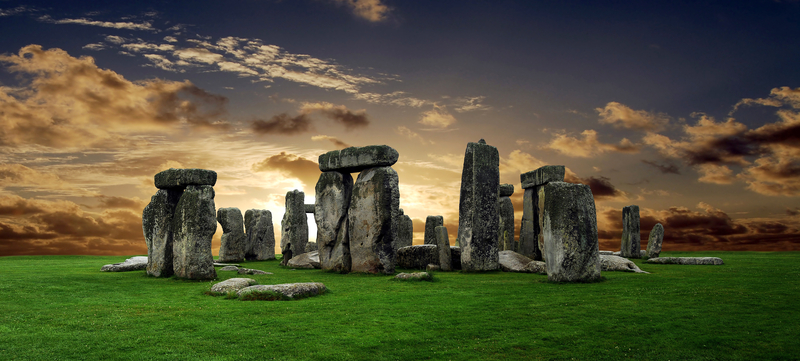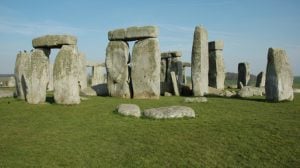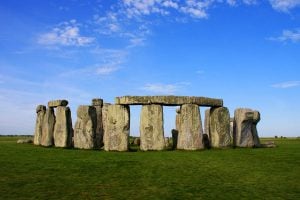

Stonehenge is a prehistoric structure built in Wiltshire, England. The Stonehenge is the oldest and only remaining monument named in the Seven Wonders of the Ancient World. Stonehenge is a series of standing stones set in earthworks and surrounding it are hundreds of burial mounds.
It is believed that the Stonehenge was created somewhere between 3,000 and 2,000 BC. This estimate is provided by radiocarbon dating performed by archaeologists. As of 1882 Stonehenge has legally been protected as a Scheduled Ancient Monument. Today, it’s formally owned by The Crown, while the surrounding area is a part of the National Trust.
Nobody is 100% sure the original purpose of the Stonehenge. It is assumed that it was a burial  ground or place of worship. Archeologists have found human remains that date back 3,000 BC and more remains that date back within 500 years of 3,000 BC. It is believed that before the large stones were erected, large wooden posts stood in their stead. The stones that were used to construct the Stonehenge weigh tons and it is assumed that the people in the area would have used a system of moving the stones on a row of poles, a popular method in Japan, China, and India.
ground or place of worship. Archeologists have found human remains that date back 3,000 BC and more remains that date back within 500 years of 3,000 BC. It is believed that before the large stones were erected, large wooden posts stood in their stead. The stones that were used to construct the Stonehenge weigh tons and it is assumed that the people in the area would have used a system of moving the stones on a row of poles, a popular method in Japan, China, and India.
Relatively nothing is known about the society that built the Stonehenge, except that they most likely built the monument as some type of religious monument. This theory is attributed to the exhumation of both human and animal remains dating back to the time that the Stonehenge would have been constructed and within 500 years of its assumed completion. The animal remains were examined and provided evidence that the residents who lived during this time most likely gathered for mid-summer and winter festivities. This evidence correlates with the theory that the Stonehenge was intended as a religious monument.
The Stonehenge could have also been a place of healing. This is evident from the large number of cremations and burials in the surrounding area that had some type of traumatic deformity. Another shred of evidence pointing towards the Stonehenge as a healing place would be attributed to the exhumed remains coming from vastly different areas such as a teenager from the Mediterranean, or an older man from Germany.
 Another popular theory associates the Stonehenge with the Arthurian legend of King Arthur and the sorcerer Merlin. The legends depict the rocks as healing stones brought from Africa to Ireland by Giants. The king wanted to erect a monument that would honor fallen soldiers and Merlin advised the king to consider the healing stones. The legend also depicts that Constantine III and Uther Pendragon, the father of King Arthur are buried there.
Another popular theory associates the Stonehenge with the Arthurian legend of King Arthur and the sorcerer Merlin. The legends depict the rocks as healing stones brought from Africa to Ireland by Giants. The king wanted to erect a monument that would honor fallen soldiers and Merlin advised the king to consider the healing stones. The legend also depicts that Constantine III and Uther Pendragon, the father of King Arthur are buried there.
This mysterious monument belongs to a now nonexistent civilization with no written records. Some attribute the creation of the Stonehenge to extra-terrestrial lifeforms. Today millions of people travel to see the Wonder of the Ancient World.
Stonehenge is deeply mysterious and fascinating! It looks like a peaceful place!
Yes Indeed! Do you plan on visiting any time soon?